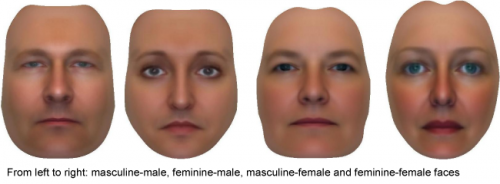War and peace require different leaders

"I'm a war president." George W. Bush said it more than once. But is there an actual distinction between war and peace leaders?
Scientists from VU University Amsterdam found out that there is. Times of war seem to require a different type of leader than times of peace. In the latest issue of PLoS ONE, a team of researchers led by Brian R. Spisak and Mark Van Vugt argue that there is a biologically based hormonal connection between leadership behavior and corresponding facial characteristics. Surprisingly, not the actual biological sex, but masculine or feminine traits matter for leaders to be chosen as good warriors or peacekeepers.
Limited stereotyping
Brian R. Spisak: “We showed our 118 participants four kinds of faces: masculine-male, feminine-male, masculine-female and feminine-female. Subsequently, we asked people who they would vote for as their leader during presidential elections in times of war or peace. We found that women and men were picked equally during war and peace, but people significantly prefer leaders with masculine faces in times of war and more feminine looking leaders in times of peace regardless of the biological sex. This requires us to think more deeply about how we classify gender. Simply classifying people as man or woman is very limiting and leads to unnecessary stereotypes and expectations. Also, we showed that this sort of masculine-feminine classification works in Asia (with Asian faces) suggesting this is a more natural and accurate way of prototyping – rather than stereotyping – individuals across culture.”
Hormones
Hormones such as testosterone and estrogen are associated with facial traits as well as behavior. A higher level of testosterone makes the face look more masculine (thicker brow, thinner lips, broader jaw) and also stimulates typical behavior related to warfare, to establish dominance. In contrast, estrogen is connected with more feminine features such as full lips, wide eyes and a thinner, more curved brow and to behavior that is associated with peacekeeping.
A child can make predictions
Spisak: “Our research shows that war and peace elicit different leadership prototypes and that subtle facial cues of aspiring leaders help determine their perceived suitability for the job. This can help explain how previous research has shown that a child as young as five years old can predict the outcomes of actual political elections just by looking at the faces of the candidates.”
More information: The publication Warriors and Peacekeepers: Testing a Biosocial Implicit Leadership Hypothesis of Intergroup Relations Using Masculine and Feminine Faces can be downloaded on the website of PLoS ONE.

















